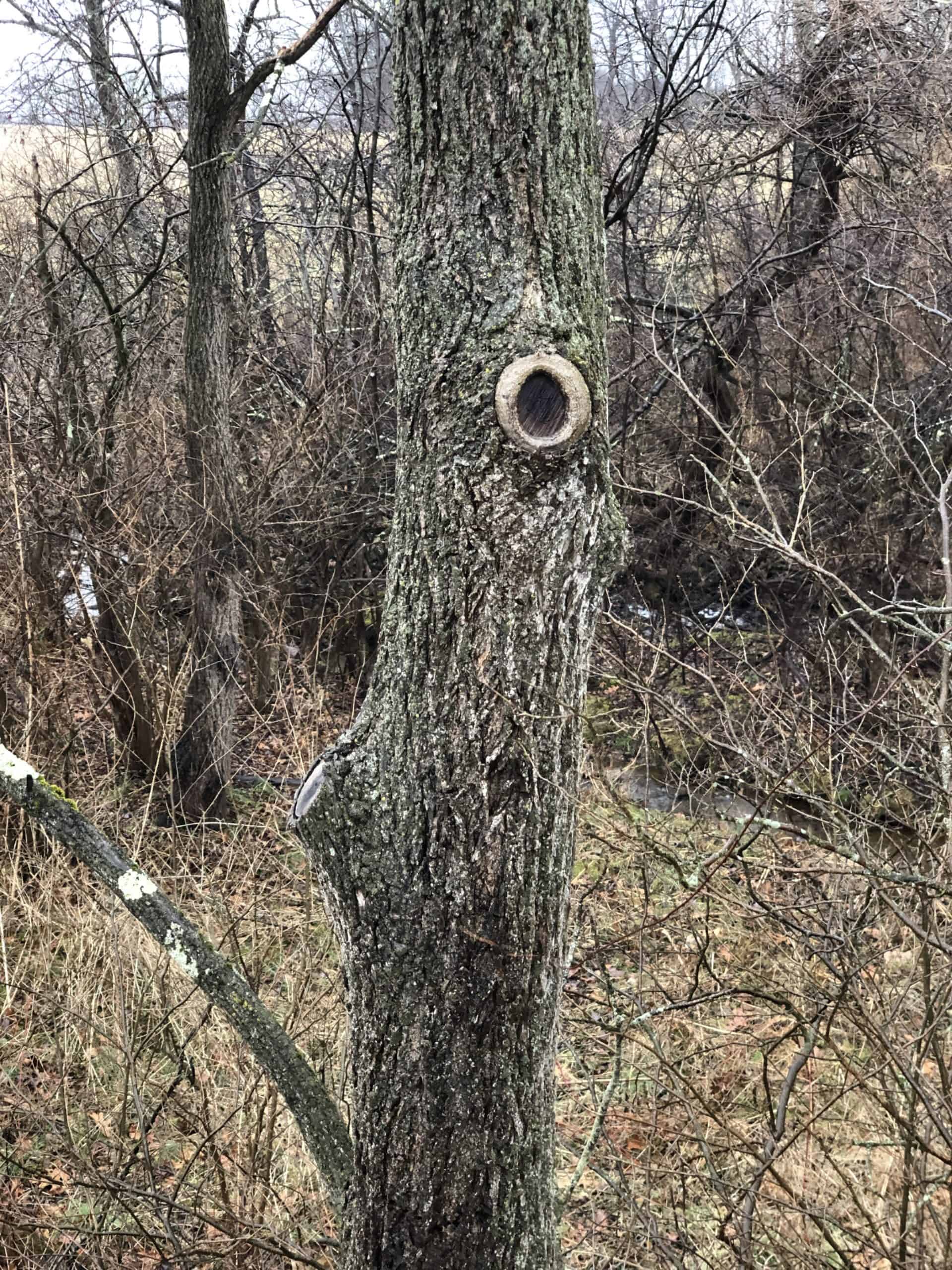Crow’s Nest: Proper pruning
By Daniel Barringer, Preserve Manager.

Photo: Daniel Barringer
At Natural Lands preserves we try to showcase best management practices for land stewardship, and that includes using proper pruning cuts when pruning is necessary. (We don’t prune any more than is needed to manage hazard trees, clear farming equipment along tractor lanes, or to prevent long-term problems of tree health such as crossing and rubbing limbs. Rarely pruning is done to open up a vista for aesthetics).
Best practices for pruning involve a method pioneered by Dr. Alex Shigo and sometimes called the Shigo method. He studied the way trees compartmentalize wounds—they don’t “heal” the way animals do—and called the process new growth uses to isolate the internal core of wood from fungal infection “CODIT” or Compartmentalization of Decay in Trees.
The pruning process begins with the three-cut method: to keep the weight of a heavy branch from tearing bark down the trunk of the tree, the first cut is a notch undercut on the bottom of the branch several inches out from the trunk. Then a second cut from the top a little further out causes the branch to drop to the ground and any ripping bark stops at the undercut notch. The light stub that is left is temporary, as it is removed with the third cut. This one should be precisely placed at the “branch-bark collar”—neither flush cut along the trunk nor leaving a stub of wood sticking out that will attract decay that can then enter the trunk. New growth of the branch-bark collar will form a ring around the former branch site and eventually close over.
Above is a photo of a black walnut along Piersol Road that was limbed up so that low branches wouldn’t stick into the road. In a couple years the callus tissue forms a nearly perfect circle. Eventually, as in the walnut tree shown below, the bark closes entirely over the wound (this particular tree had a bunch of dead, low branches that were removed so that they wouldn’t serve as a ladder for invasive vines).
We hope that our work is not so apparent that it interferes with our visitors’ enjoyment of nature, though with a practiced eye you may see signs of our work in the form of these proper pruning cuts working with the tree’s biology to maximize tree health.

Photo: Daniel Barringer
